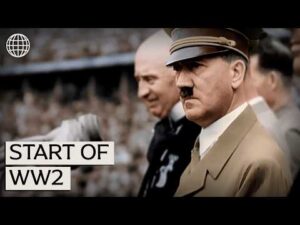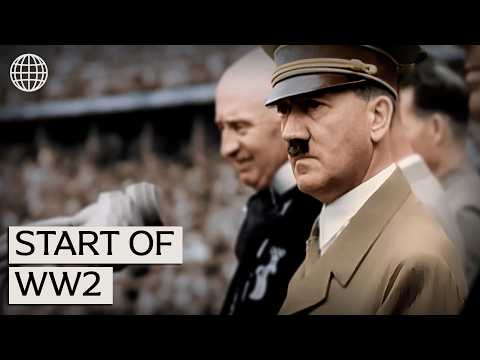
The thunder of cannons had barely subsided after the Great War when the seeds of another, even more devastating conflict, were already being sown. World War I, far from bringing lasting peace, left behind a legacy of bitterness, resentment, and unresolved issues that would ultimately ignite World War II. This wasn’t a sudden eruption, but a slow, agonizing build-up of tensions, fueled by political ambition, economic hardship, and a catastrophic failure of international cooperation.
### The Unjust Peace of Versailles and the Failure of the League of Nations
The Treaty of Versailles, intended to secure lasting peace, instead sowed the seeds of future conflict. The harsh terms imposed on Germany – crippling reparations, territorial losses, and a demilitarized Rhineland – fostered deep resentment and a sense of national humiliation. This fertile ground allowed extremist ideologies to flourish, paving the way for the rise of Nazism. Simultaneously, the League of Nations, designed to prevent future wars through diplomacy and collective security, proved tragically ineffective. Its inherent weaknesses, particularly the lack of a strong enforcement mechanism and the reluctance of major powers to act decisively, allowed aggressive nations to act with impunity.
### The Rise of Totalitarianism and Aggressive Expansionism
The economic devastation following World War I created a climate of instability, ripe for exploitation by totalitarian regimes. In Germany, Adolf Hitler’s Nazi Party capitalized on national grievances, promising restoration of German glory and blaming the country’s woes on external enemies. Similarly, Benito Mussolini’s fascist Italy and the militaristic government of Japan embarked on aggressive expansionist policies, fueled by dreams of empire and a belief in their own national superiority.
Germany’s rearmament, a blatant violation of the Treaty of Versailles, was met with weak responses from Britain and France. Japan’s brutal invasion of Manchuria and subsequent conquests in China were similarly condemned but not effectively countered. Italy’s imperial ambitions in Africa went largely unchecked. This pattern of appeasement – a desperate attempt to avoid another war by conceding to aggressors – only emboldened these nations and accelerated their expansionist drives.
### Strategic Reallignments and the Path to War
The international landscape grew increasingly unstable as strategic alliances shifted. The signing of the Molotov-Ribbentrop Pact in 1939 between Nazi Germany and the Soviet Union, a pact of non-aggression that secretly divided Eastern Europe into spheres of influence, was a particularly chilling example. This pact, born out of mutual self-interest, eliminated any potential for a unified front against German aggression, effectively giving Hitler a free hand in the west.
### The Inevitable Collision
The combination of unresolved tensions from World War I, the rise of aggressive totalitarian regimes, the failure of the League of Nations, and the disastrous policy of appeasement created a perfect storm. Each act of aggression, each unchecked land grab, brought the world closer to the precipice. By 1939, the path to war had become tragically clear. The invasion of Poland by Germany, a direct violation of international agreements and a blatant act of aggression, finally triggered the global conflict that had been brewing for two decades.
The period between 1918 and 1939 serves as a stark reminder of the dangers of unchecked ambition, the importance of international cooperation, and the devastating consequences of failing to learn from the mistakes of the past. Understanding this crucial period is essential to comprehending the origins of World War II and its lasting impact on the world.
**(Optional addition: You could include a brief call to action here encouraging readers to watch the YouTube video for a more in-depth understanding of the subject. You could also mention History Hit and its free trial again, if deemed appropriate.)**
